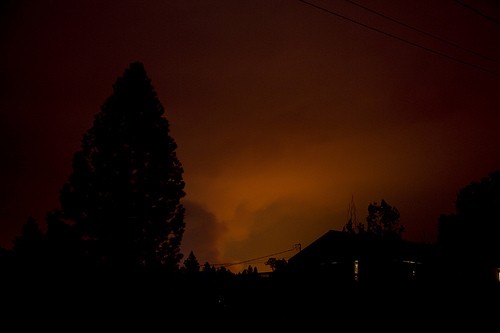Rim Fire: The Aftermath

After the largest wildfire to burn in the Sierra Nevadas in over a century, northern Californian landscapes are looking sparse and desolate.
The Rim Fire burned through the mountainous forests, leaving trails of black ash.
“Remote sensing satellite images indicate that virtually all of the vegetation is dead on nearly 40% of the area of the 401-square-mile blaze,” according to the Los Angeles Times.
Ecologists expect that it may take 30 to 50 years for the ashen fields that were once large patches of trees to recover in the Stanislaus National Forest to revive itself.
Many people blame the decrease in funds to support forest maintenance and preventative care for the recent increase in raging wildfires—with serious ones in Nevada, Alaska and New Mexico in the past year alone.
"We've got to invest up front in terms of controlling and managing these fires," said Jonathan Jarvis, Director of the National Park Service. "Just waiting for the big fire and then throwing everything you've got at it makes no sense."
So far $122 million has been invested in repairing the forest according to the Incident Information System.
A San Francisco-based nonprofit, Tuolumne River Trust, has been working with state lawmakers and local business leaders to restore lands near Yosemite National Park.
“Ultimately, no matter what Congress does, it’ll fall on the shoulder of local agencies … to see the recovery through to the end,” said Patrick Koepele, who is leading the campaign to restore Tuolumne River watershed.
Volunteers with the Trust will plant trees, distribute seeds and repair trails and campsites.
Hopefully people will be able to learn from this fire to prevent future disasters from forever altering the California landscape.
Contact Executive Producer Sara Newman here and follow her on Twitter.



